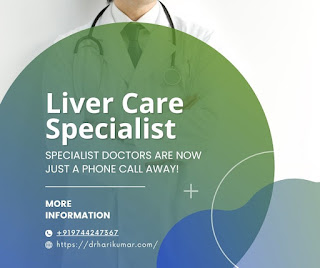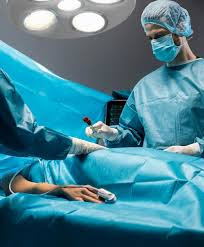Fatty Liver Disease: Causes, Risks, and Prevention
Fatty Liver Disease is becoming one of the most common liver disorders worldwide—and it’s not just a concern for heavy drinkers. In fact, non-alcoholic fatty liver disease (NAFLD) now affects millions of people globally, often without symptoms until serious damage is done. Understanding its causes, risks, and prevention is critical—not just for those already diagnosed, but for anyone interested in long-term liver health.
In this comprehensive guide, we’ll explore what leads to fatty liver disease, who’s most at risk, how to prevent it, and when to consult a liver specialist.
What Is Fatty Liver Disease?
Fatty liver disease occurs when excess fat builds up in the liver cells. A healthy liver contains a small amount of fat, but when more than 5–10% of the liver’s weight is fat, it becomes a medical condition.
There are two main types:
-
NAFLD (Non-Alcoholic Fatty Liver Disease): Not linked to alcohol use
-
AFLD (Alcoholic Fatty Liver Disease): Caused by heavy alcohol intake
If left untreated, fatty liver disease can progress to more severe conditions like:
-
Non-alcoholic steatohepatitis (NASH)
-
Liver fibrosis
-
Cirrhosis
-
Liver failure or cancer
What Causes Fatty Liver Disease?
1. Obesity and Overweight
The leading cause of fatty liver is obesity, especially abdominal fat. Excess fat in the body often correlates with higher fat storage in liver cells.
2. Insulin Resistance and Type 2 Diabetes
Fatty liver is commonly seen in people with metabolic syndrome, particularly those with insulin resistance or type 2 diabetes. Insulin resistance impairs the liver’s ability to manage fat metabolism.
3. Unhealthy Diet
A diet high in refined sugars, trans fats, and processed foods contributes to fat buildup in the liver. Frequent consumption of soft drinks and high-fructose corn syrup is a known risk factor.
4. Sedentary Lifestyle
Lack of physical activity reduces the body's ability to burn fat efficiently, promoting fat accumulation in the liver over time.
5. Alcohol Use (for AFLD)
Chronic heavy drinking overwhelms the liver’s ability to process alcohol, leading to fat accumulation and inflammation.
6. Certain Medications and Toxins
Long-term use of some medications like corticosteroids, methotrexate, and tamoxifen can contribute to fatty liver development.
7. Genetics
Family history and ethnic background may increase susceptibility, even in individuals with healthy body weight.
Who’s at Risk?
While anyone can develop fatty liver, the risk increases significantly for individuals who:
-
Have a BMI over 25
-
Suffer from type 2 diabetes or prediabetes
-
Have high blood pressure or high cholesterol
-
Lead a sedentary lifestyle
-
Have polycystic ovary syndrome (PCOS)
-
Are over the age of 40
-
Have a family history of liver disease
Even lean individuals with poor metabolic profiles can develop NAFLD—this is called “lean NAFLD.”
Symptoms: Why Early Detection Is Challenging
Fatty liver disease often progresses silently, especially in early stages. Many people don’t experience symptoms until significant liver damage has occurred.
Possible symptoms (if any) include:
-
Fatigue
-
Discomfort or pain in the upper right abdomen
-
Mild jaundice (yellowing of skin/eyes in advanced stages)
-
Swelling in the legs or abdomen (late-stage cirrhosis)
Because symptoms are vague or absent, regular liver screening is crucial—especially for at-risk individuals. A liver specialist can order liver function tests, ultrasounds, or FibroScan imaging to detect early changes.
How Fatty Liver Progresses (NAFLD Spectrum)
-
Simple Steatosis – Fat builds up in liver cells
-
Non-Alcoholic Steatohepatitis (NASH) – Inflammation and liver cell damage
-
Fibrosis – Scarring of liver tissue
-
Cirrhosis – Severe scarring leading to liver failure
-
Hepatocellular carcinoma (HCC) – Liver cancer (in rare, advanced cases)
Consulting a hepatologist or liver specialist at the NASH or fibrosis stage is essential to prevent irreversible damage.
Prevention: What You Can Do Today
Fatty liver disease is largely preventable and reversible in early stages. Here’s how smart lifestyle choices make all the difference:
✅ Maintain a Healthy Weight
Losing just 5–10% of body weight can significantly reduce liver fat.
✅ Eat a Liver-Friendly Diet
Focus on:
-
Fresh fruits and vegetables
-
Whole grains
-
Lean protein (especially fish and legumes)
-
Healthy fats (olive oil, nuts, seeds)
Avoid:
-
Sugary drinks
-
Fried and processed foods
-
Refined carbs
-
Alcohol (especially if diagnosed)
✅ Exercise Regularly
Aim for 150 minutes of moderate aerobic activity each week. Walking, swimming, and cycling are effective and low-impact.
✅ Control Diabetes and Cholesterol
Work with your doctor to manage blood sugar, blood pressure, and lipid levels—all of which impact liver health.
✅ Limit Medication Risks
Always review your medication list with a physician. Certain drugs can stress the liver when used long-term.
When to See a Liver Specialist
If you have any of the risk factors mentioned above—or if you've been told you have elevated liver enzymes—it’s wise to consult a liver specialist or hepatologist.
They can:
-
Perform diagnostic imaging (like liver ultrasound or FibroScan)
-
Monitor progression from NAFLD to NASH
-
Recommend treatment plans tailored to your health status
-
Help reverse fatty liver before permanent damage occurs
Early consultation improves outcomes and may completely reverse the disease in its early stages.
Final Thoughts
Fatty liver disease is silent but serious. The good news? It’s also largely preventable and manageable, especially when caught early. A healthy lifestyle, regular checkups, and professional guidance from a liver specialist can keep your liver functioning at its best for years to come.
If you're in a high-risk group or simply want to take proactive steps, don’t wait for symptoms. Know your liver status. Prevention starts now.




Comments
Post a Comment